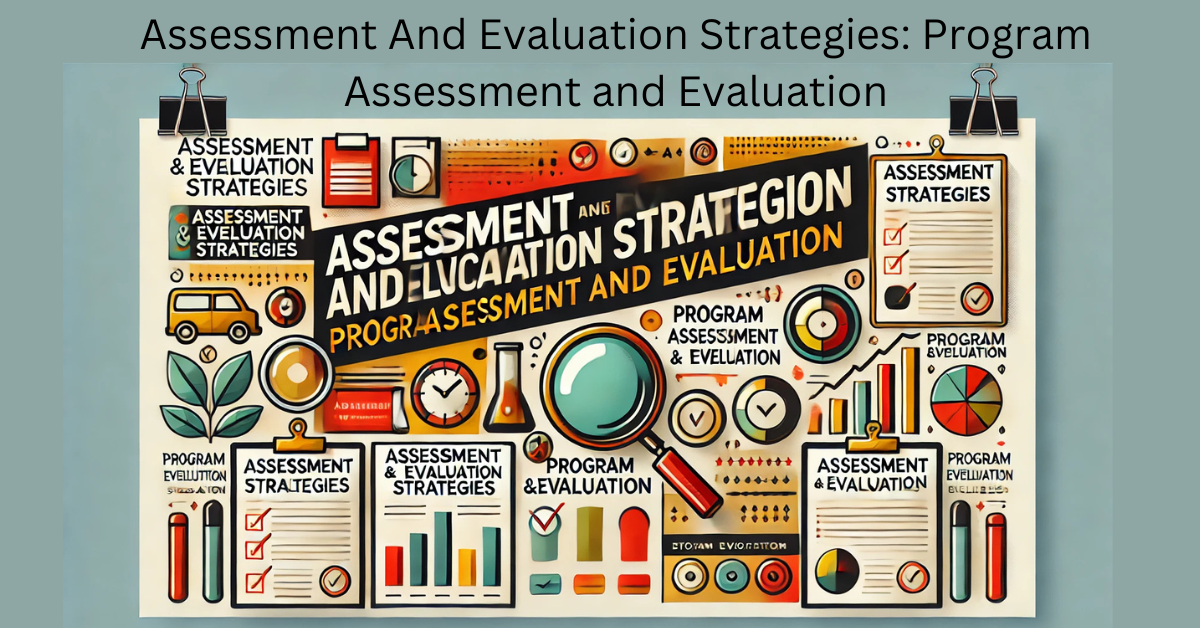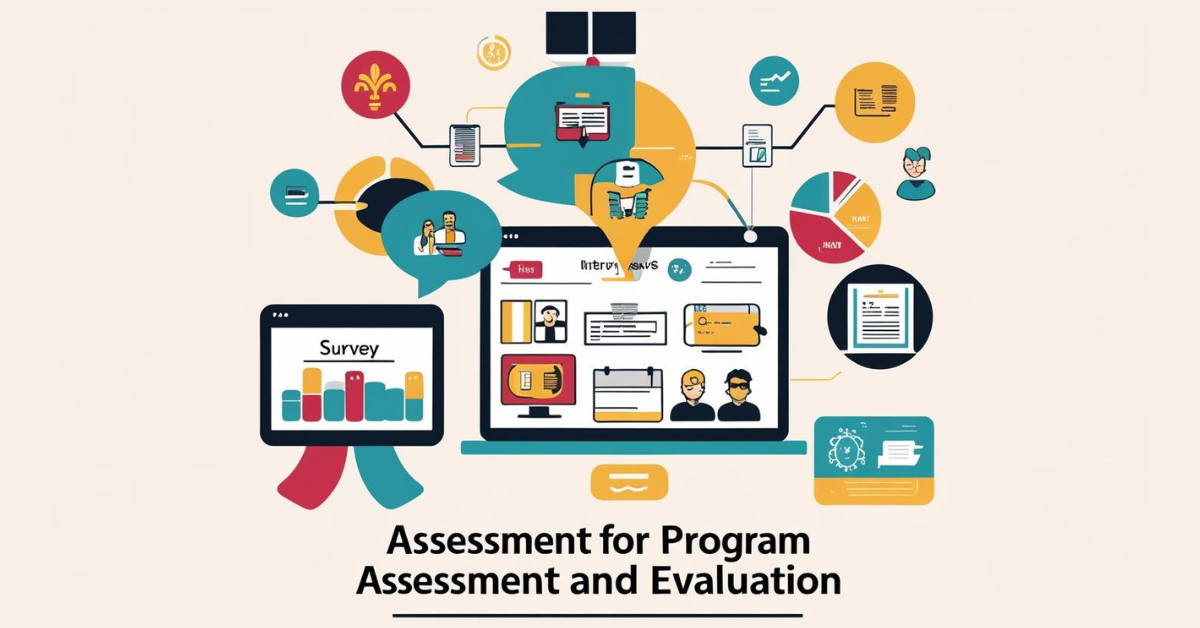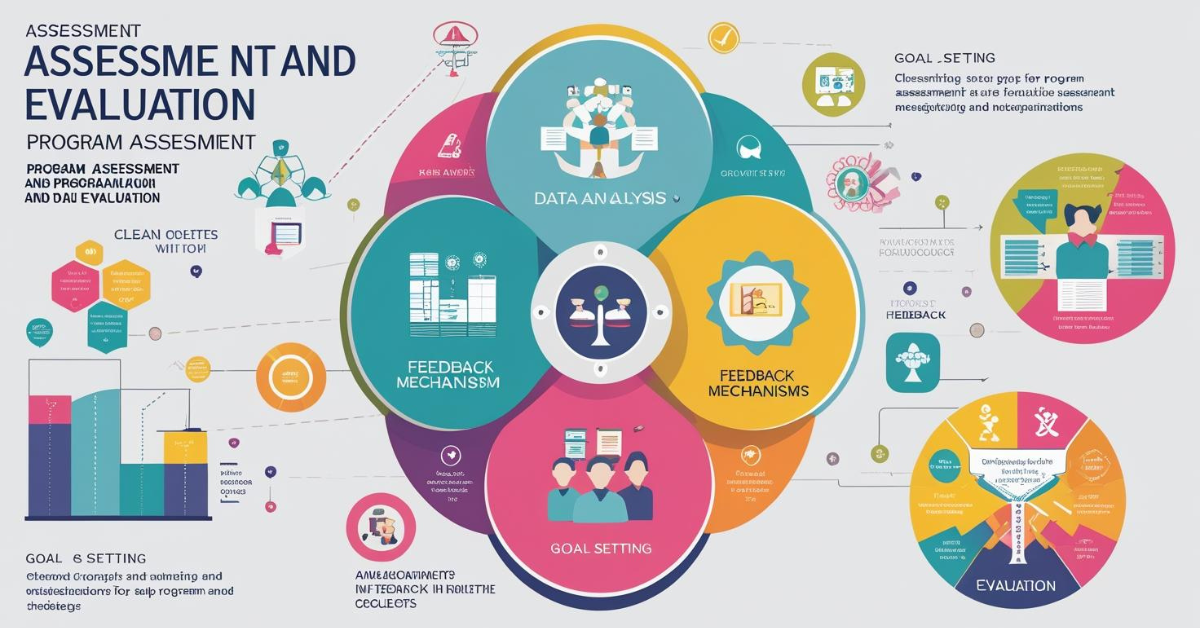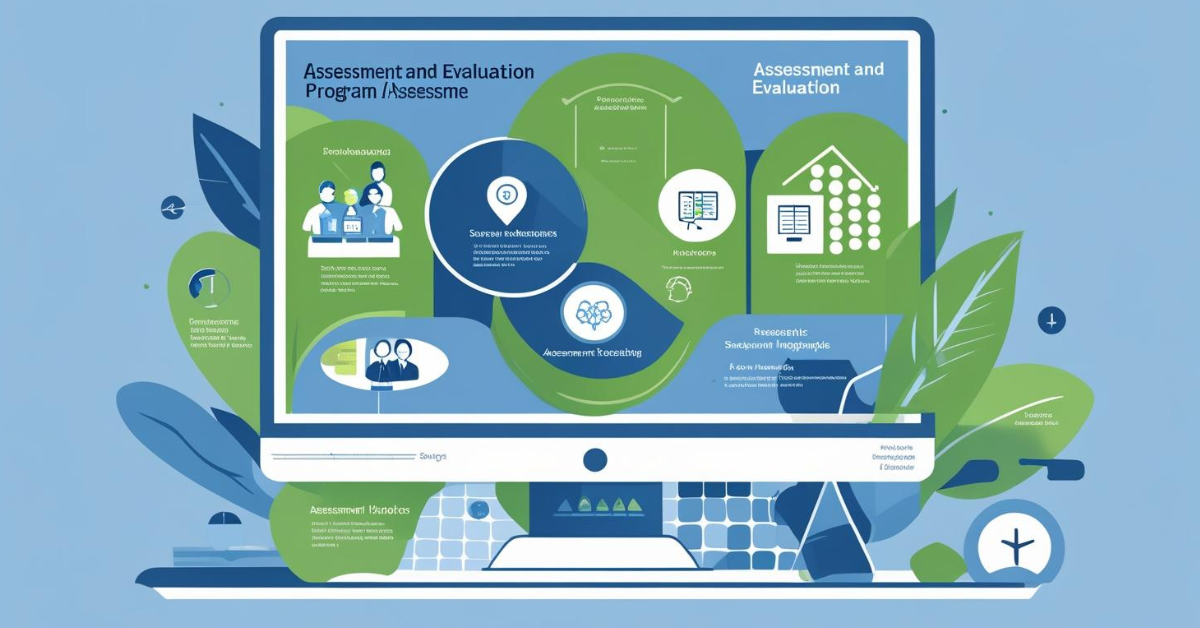Many Assessment And Evaluation Strategies for Program Assessment and Evaluation are used in nursing Academic for different levels of programs. These strategies are very specific to evaluation.
Program Assessment and Evaluation: Assessment And Evaluation Strategies
The quality of a program, program outcomes, and course outcomes is fostered though ongoing assessment, feedback from those who have a stake in the program, and continuous use of data to foster improvements and promote quality. The strongest indicator of a successful nursing program is the NCLEX pass rate because it signals to all stakeholders that the graduate has met minimal educational standards to practice nursing.
This is closely followed by graduate performance in the workplace, satisfaction of program graduates, and satisfaction of the graduates’ employers. The assessment process of systematic evaluation that occurs at the program and course levels of a nursing program influences these indicators of positive outcomes. Assessment on the part of the faculty, students, graduates, and employers can provide ongoing feedback to promote program quality.
The program faculty uses the internal course measurements—teacher-made tests, test bank, or a combination thereof, non-test classroom assessment methods, and clinical skills check lists—to determine student course group achievement of knowledge. The external course measurements include standardized testing such as the Assess test, and other commercially available tests. The ultimate external program measurement is NCLEX for Assessment And Evaluation Strategies.
Program Assessment and Evaluation
The program level of assessment uses measures that will provide feedback on outcomes and processes. Feedback measures related to students receive the most attention because of the connection to a quality program product: the nurse graduate prepared for practice. Faculty focus groups or faculty surveys can provide internal feedback, based on faculty expertise and satisfaction.
The measures of student exit interviews, exit surveys, pass rates on national qualifying examinations, graduate surveys, and employer surveys can provide patterns of information about the quality of the experiences and interactions, showing positive areas to enhance or negative areas to change for program improvement for Assessment And Evaluation Strategies.
NCLEX-RN Pass Rates: Assessment And Evaluation Strategies
The national qualifying examination (NCLEX-RN, or NCLEX-PN) pass rates provide quantitative data that can be benchmarked against quantitative data from other programs and the national average pass rate. Each program establishes a desired pass rate and works to achieve and maintain that pass rate. A program with a reputation for high-quality graduates may establish the standard of a desired national pass rate of 95% to 100%.
A program that takes a larger number of higher-risk students with test anxiety or other challenges may establish the desired program pass rate to be at or above the national average pass rate. The respective state boards of nursing can provide pass rate data to the nursing program, and in some states, the low, average, and highest pass rates for all nursing programs are included in the report. Comparing the program pass rate to other nursing programs’ pass rates and the national pass rate shows whether these program graduates are meeting state and national standards for Assessment And Evaluation Strategies.
When the desired group pass rate is achieved, programs continue to monitor assessment indicators, and incorporate additional measures when possible to promote program quality. Programs that do not achieve the desired group pass rate need to conduct a more detailed assessment to determine weak areas that need strengthening.
A good place to start for a more detailed assessment of strong and weak areas is analysis of the NCLEX-RN group performance data for the respective school, which shows comparison to national standards. Assessment of group performance on NCLEX content areas helps program faculty to determine strong curricular areas and areas in which the graduates as a group are not performing as well as national averages. There is NCLEX pass rate data provided to all programs, and the group curricular information related to a particular school is available for purchase.
The curricular information may show a weakness across the group in a particular area, such as priority identification. Then for every course throughout the program, faculty needs to look at how priority identification is taught and student achievement is measured at progressively increasing levels. Closer inspection of what and how the respective content area is taught will reveal areas that can be strengthened.
Assessment and testing measurement data may show this particular student group had more difficulty with priority identification on test items related to this topic. If standardized external testing has been used by the program, the faculty can compare standardized testing results to determine if the group scored lower on content related to the same areas as identified in the NCLEX results.
Particular attention to strengthening priority identification skills of students in the last year of the program can result in the next year’s NCLEX-RN takers achieving well in the area of priority identification. A word of caution here; Strengthening one curricular area should not occur at the expense of another area. It is an ongoing challenge for nursing educators to strengthen and maintain all curricular areas to promote successful achievement of program outcomes and achieve a successful NCLEX pass rate.
Follow-Up Surveys and Interviews
Assessment of graduates and employers provides qualitative and quantitative feedback about program quality. The assessment surveys need to have embedded program curricular outcomes to provide focus for the assessment, as well as measures related to satisfaction, employment, community service/involvement, and participation in professional organizations. Graduates are major consumers of the program. Interviews with and a survey of students graduating from the program pro vides immediate input related to program quality.
Graduating students can provide feedback on challenging courses and faculty efforts to promote learning. Graduates can interpret if the challenge means it fostered achievement on their part, or hindered achievement, with suggestions for what worked well for them and what did not work. Group data from the graduate interviews and graduate surveys can show major program strengths, any areas that need strengthening, and overall satisfaction with the program.
Follow-up surveys to graduates and their employers are conducted in 6 months to 1 year, and again in 2 to 3 years. The follow-up surveys provide data about areas for which the program strongly prepared the graduate, and any areas that need strengthening. Many programs send out program-designed graduate and employer surveys. There are also commercial surveys available, such as those offered through the American Association of Colleges of Nursing (AACN).
The commercial surveys can be administered online, analyzed, and followed by an evaluative report that is sent back to the school, and may contain an option to compare program results to those of nursing program results in other schools. A comparison of graduate exit, graduate follow-up, and employer survey data with NCLEX-RN pass rates and curricular data frequently shows areas of congruency.
Internal Feedback: Assessment And Evaluation Strategies
Ongoing feedback for program assessment also comes from sources internal to the program, such as the current students and faculty. Individual input is important but can skew results from very happy or unhappy individuals and compromise privacy; Therefore, all data are compiled together into group data. Current students can provide program input through surveys and group interviews.
A focus group of representatives from the student body that is conducted on an annual or biannual basis gives group input on program strengths and improvements needed, primarily in areas to increase student satisfaction. The process can also reveal course weaknesses or clinical issues. Timely student group input can assist the program faculty in quickly addressing a difficulty before it becomes a major problem for the program.
Faculty surveys and faculty focus groups also provide input on ways to strengthen the program. The input could range from printer difficulties to team teaching or course difficulties, for example. Easier access to a printer may free up time for faculty to spend more time with students and in course preparation.
If faculty group data show team teaching or course difficulties that may impinge on student achievement of outcomes, it may require more complex interventions. The annual input from faculty and students is crucial for determining strengths and areas to be addressed in a timely manner to promote program quality.
Accreditation
Program accreditation by the Council of Collegiate Nursing Education (CCNE) or the National League for Nursing Accreditation Commission (NLNAC) provides a mark of quality against national standards met by other programs. Program accreditation is based on the faculty’s assessment of systematic evaluation data from all sources, ie, faculty, students, graduates, employers, consumers, and its use to maintain, strengthen, and revise the program when and if needed.
Program chairpersons should have information about the CCNE and NLNAC accreditation standards, and additional information can be obtained from the respective websites. Accreditation of a nursing program signals to all stakeholders that the program is meeting nursing standards of higher education
Course Assessment
Course assessment of student learning encompasses didactic (theoretical knowledge), college laboratory oratory, and clinical assessment. The assessment measures must relate to student course outcomes and should progressively demonstrate student achievement of the course outcomes. Assessment measures tied to course outcomes and faculty modeling of desired behaviors can increase student modeling of desired professional behaviors and performing at higher levels on assessment measures (Ball & Garton, 2002).
Development of a course blueprint that connects course outcomes to methods of evaluation can facilitate assessment. Regardless of the assessment measure used, it is important to have valid evaluative measures that reliably measure achievement of the same course content when used repeatedly.
Evaluation methods and weighting of each method as a proportion of a course grade are stated in a course syllabus, providing clear expectations to promote learning and avoid misunderstandings between faculty and students. The course syllabus serves as a contract between faculty and student.
Outcome Blueprint: Assessment And Evaluation Strategies
An outcome blueprint contains a pictorial blueprint of course outcomes and methods of evaluation. The use of a table format allows faculty to determine that all outcomes are being evaluated and shows the method used for the evaluation. The course outcomes stated in the course syllabus are listed down the side column, and methods of evaluation are listed across the top header row.
Each course outcome should have one corresponding method of evaluation. After completing the blueprint, examine it to determine that there is at least one method of evaluation for each course outcome. If one course outcome is not being measured, determine if the course outcome is crucial, and if it is crucial, add a method of evaluation to measure student achievement of that outcome. If a method of evaluation is being used that does not correspond with any of the course outcomes, delete that method of evaluation or add a course outcome for Assessment And Evaluation Strategies.
Read More:
https://nurseseducator.com/assessment-and-evaluation-strategies-methods-of-course-evaluation
Social Links:
https://www.facebook.com/nurseseducator/
https://www.instagram.com/nurseseducator/




1 thought on “Assessment And Evaluation Strategies: Program Assessment and Evaluation”